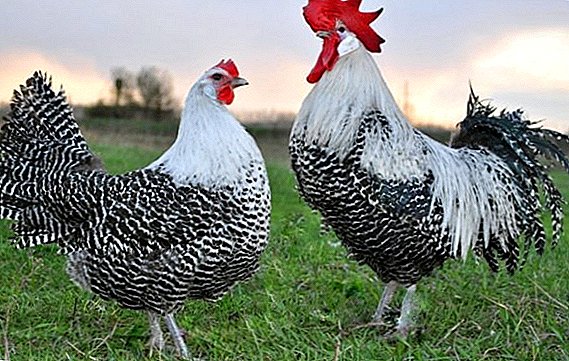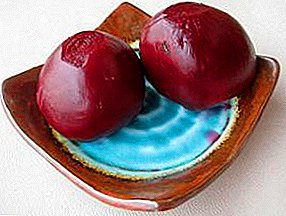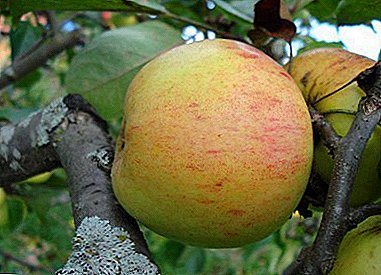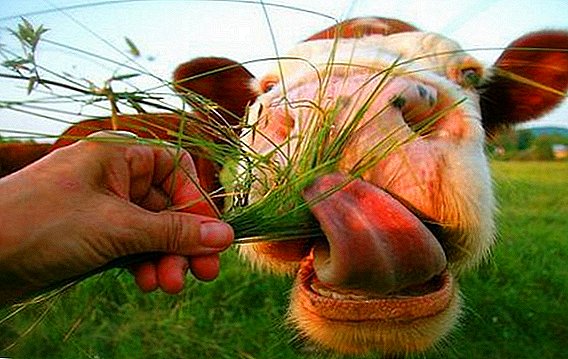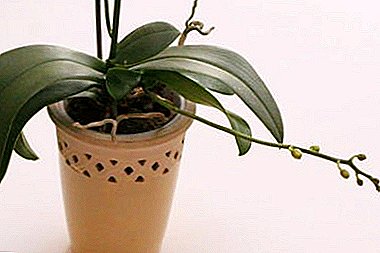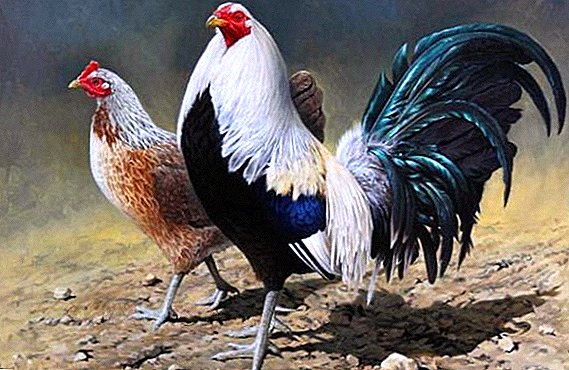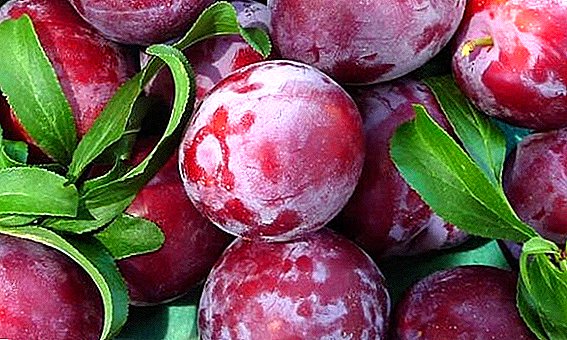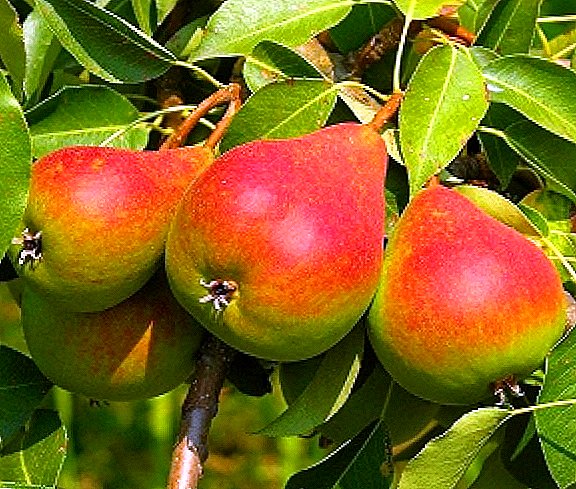
The pear is very tasty and useful garden culture which is pleasant to children and adults.
Pear grown in suburban areas, large farms and large orchards. The fruits of this tree are very sweet, juicy and soft.
They are used fresh, also for processing (making marmalade, juice and jam). In gardening, pruning of fruit trees plays a very important role, on which the yield and quality of fruits depend. This culture is very fond of sunlight, which is good for its fertility.
If you have wondered what time of year to cut pears, we will try to tell you about all the features of pruning in each period.
We cut pears in different seasons: we talk about the features and timing of each period
Exists several periods of pruning fruit trees: spring, autumn, summer and winter. The purpose of pruning is to improve the quality of the fruit, to regulate the fruiting and growth of the plant, to improve the lighting of the crown, to remove dry, broken and diseased branches.
Pruning makes it possible to grow a tree of the necessary growth with a good, durable trunk that in the future will be able to withstand a large crop weight, as well as preserve the productivity and fouling of wood for a long time, start fruiting in time and get high-quality fruits.
In order for the results of the pruning process not to disappoint the gardener, it is necessary to take into account the characteristics of each pear variety.
Most often, spring pruning is carried out when the frosts have passed and the growing season has not yet begun. But other terms are important. Let's talk about each of them separately.
Full description of the process of pruning pears in the spring
As we have already said, spring pruning is carried out at the moment when severe frosts have passed, but the growing season has not yet begun to act.
We list the basic rules of spring pruning, in order not to cause damage to the fruit tree
• For cutting use a special device called shears with a very sharp blade, for large trees use a hacksaw. After removing the branches of the tree, all devices must be disinfected with alcohol-containing substances.

• The pruning process begins with thinning the crown of the tree, this is done in order to ensure good access of air and light.
• It is necessary to shorten the central trunk by about one-fourth. That in the future will allow to form a bowl-shaped tree.
• This process of tree care should be carried out at an air temperature not lower than 5 ° C.
• After cutting the branches, the cut points must be lubricated. The following substances are suitable for this: linseed oil, oil paint, garden pitch and means of "Rannet". The latter is also suitable for impregnation of damaged areas of the pear.
• Exist two trimming methods: cut on the ring and shortening the branches. The first method is as follows: the cut is carried out under the ring, i.e. at the base of the branch. In order to avoid bark opening, first make a cut down, and then the main upper gash. When shortening the branches, the growth of lateral shoots is accelerated, and the buds located below the cuts begin to awaken.
• It is necessary to take into account the fact that pear branches grow, not only vertically, but also horizontally. From this it follows that it is necessary to support the shoots growing horizontally, and it is necessary to get rid of the shoots reaching the vertical. Mandatory downward branches are cut, as they are less productive.
• When pruning in the spring, it is prohibited to add nitrogen fertilizers, since the culture at this time takes away all the nutrients from the soil.
• With the right pruning of wood, the next year all places of cuts will be carefully overgrown, the culture will be healthy and will start to give a rich harvest.
Summer pear pruning: what is this process?

Summer pruning of trees consists in pinching (pinching), that is, in removing the growing shoots at the treetops. Pinching done with nails, and in some cases, when removing most of the escape, shears.
As a result, pinion has a huge impact on the tree. A long period of time is devoted to doing this process. But this pruning process makes it very economical to use the nutrients that enter the plant. This is due to the fact that when pinching, the required length of the shoot is achieved by suspending its growth, whereas the one-year shoot is shortened next spring, a significant part of it is removed, for the formation of which nutrients have already been used.
The reaction of the fruit crop to pinching depends on its duration:
• If pinning is carried out during the period of intensive growth (the month of June), then the growth of fast-growing shoots is delayed. This contributes to a new formation, from the axillary buds of the pinned shoots, premature summer shoots, as well as to the growth of weakened shoots, located not far from the shoots with which they were held, and the leaf buds are transformed into fruit ones. It is important to remember that the pinning does not have a very good effect on the growing season of the tree, which subsequently affects the wintering of the plant.
• Also pinching is carried out also at the end of the shoot growth attenuation. As a result, shoot maturation improves and the axillary buds develop better.
Autumn pruning: what is its essence and main aspects
In the autumn period pruning is carried out from late August to mid-September. Carry it only for medium or early varieties of pears, which, as a rule, are long-livers. If this process is carried out in time and correctly, then next year you will get a very big harvest.

Basic rules for cutting pears in the fall
• In no case can not immediately cut the tree, due to the fact that it will throw all its forces on a very fast recovery and will launch many vertical shoots, which in one two years will outgrow the previous height. The best option would be to divide this procedure into several periods, for example, one part should be cut this fall and the next one should be cut.
• Pruning in autumn should be carried out to a temperature of 0 ° C.
• First, remove shoots that grow at a 90 ° angle from the trunk. Only after that those which grow in parallel or vertically to a trunk are removed.
• It is important to know that when removing branches, do not cut off the excess and do not leave stumps. A landmark in this is the annular flow of bark, which is clearly visible at the base of the growing branches. It is in this place that there are tissues that heal and regenerate wood especially quickly. If a stump is left or the branches are too trimmed, the tree will heal for a very long time.
• Cutting branches more than 3 cm thick should be carried out as follows: to begin with, cut from the bottom, and only after that you can cut from the top. If this is not taken into account, the bark under the trimmed branch can be damaged, due to the fact that the non-doped part can break under the weight of its weight.
• As in the case of spring pruning, the place of sawing must be treated with garden pitch or other special substances. If this is not done, the tree will begin to cry, which will entail the attraction of various insects that will affect the tree badly.
• After pruning, you should not feed the plant, as the tree will take the nutritive components from its roots.
Winter pruning: whether or not to spend it in this period, and how it affects the trees

Pear pruning during this period is not recommended at all. Since low winter temperatures can have a very negative impact on the plant. Branches that are cut off, not only do not have time to heal, but can also die from frost. Winter pruning is carried out from the beginning of November to the beginning of March, when the tree is at rest.
Features winter trim
• As with all pruning periods, it must be done with a pruner, delimbing machine or saw.
• It is necessary to start pruning by removing cross, dead, weak and rubbing, sick and damaged branches.
• It is necessary that the middle of the tree was open to remove large branches. If you need to remove several large branches, then this procedure should be divided into several winter periods.
• In winter, you can remove branches that are too wide and take away the height of the tree.
• Usually pruning in February at -15 ° C.
• They begin this process with old pears, since their buds awaken earlier than those of the young.
• In order for the wound to heal faster and not freeze in the winter, it is important to use a clean and sterile instrument, and after pruning to treat the wounds with a garden pitch.
It is also interesting to read about the varieties of columnar pears.
The process of pruning old and young pears, what is their difference. Pear trimming scheme, and what tools are used for this process
Pear pruning is done to improve crop yields and to get more sunlight. Agrotechnics claim that trees that are pruned are less subject to technical forming. Pruning is carried out both old and young pears, a detailed description of each of the processes you will read below, as well as what tools are needed for this, and what scheme for pruning is used.
All the nuances of trimming an old pear or how to extend the life of a tree
Poor pruning of old pears is sometimes detrimental to old fertile trees. But often, in order to return health, form and fruiting to the plant, it is necessary to carry out anti-aging measures, which is trimming pears. Sometimes the garden goes from one owner to another, and the first never cared for the trees, because of which they grew tall, but little fruit. To do this, carry out activities for pruning old pears.

Sometimes there is a need to shorten a pear if the tree has grown too high. And if the pear was cared for and its height corresponds to the normal height for harvesting, the gardener begins the process of rejuvenating the tree by thinning the crown. This event must begin at the end of winter or in early spring, before leaves and buds begin to form.
First, cut the sick, broken, frozen and non-bearing dry branches. This will allow the sun's rays to better illuminate the tree crown, and you will also see the remaining amount of work that needs to be done. Then remove the excess shoots, shoots growing at an acute angle or parallel to the crown of the tree, as well as shoots competitors. Some of the remaining shoots can be shortened, and then treat fresh wounds with decoction.
If you properly rejuvenate the old pear, then it can save the tree from felling. Everything is possible that after the rejuvenation of the old pear, may not bring a large crop at first, or even give less fruit, but do not be upset, it is not forever.
Pruning young pears, what factors you need to know when holding this event
The first and most important pruning of young pears is carried out immediately after planting the seedling and immediately performs two tasks:
• When a plant is planted, its root system is damaged, and nutrition can be improved by shortening the branches.
• The first tab of the pear trimming scheme, shortening the conductor.
In the autumn, in the year of planting pear seedlings, pruning is not carried out, there is no need for this. If you do everything correctly in the first year of pear pruning, then in the future the sapling will grow well and fold its crown, requiring only pruning of old shoots. When pruning a young pear, the conductor must be higher than the trimmed shoots, which will have an impact on the pyramidal growth of the tree.
Pruning pears older than one year is carried out 2 times a year, which very well affects the increase in branching, the formation of semi-skeletal branches on which fruit branches grow. To do this, they are shortened by 25% of the total length. Next, gardeners need to pay attention to the tops. They are formed frequently, especially after the winter period.
Tops can quickly grow into large branches, which significantly thickens the crown of the tree, so in the spring they are converted into fouling and semi-skeletal branches, and some of them should be completely cut. If in the winter there were severe frosts, and the wood above the tops frost out and the leaves grow poorly on the tree, then the shoots on the skeletal branches will develop poorly. Then it is necessary to cut off everything that is above the tops with their part.
And from the second half formed branches, which contributes to the restoration of the crown of the tree. In the fourth year of life of young pears, lay the second tier. And after the fifth year, the annual growth will decrease, because of this the shortening of the branches will need to be made more moderately.
Pear trimming scheme or how it happens

In a young sapling, who is one year old, the trunk is cut to 25% of the total length, this is done for branching the tree crown. Side shoots are also shortened, but only to the first bud. After another year of life, the top of the main trunk is cut off by 25–30 cm, and the branches are cut by 6–8 cm. For the correct formation of the tree shape, the lower branches must be left longer than the upper ones. For good fruiting, the shape of the tree should be in the form of a pyramid.
After passing these processes pruning is carried out in two stages:
• The first stage of sanitary is in the month of March. Its essence is the removal of dry and diseased branches.
• The second stage forming, takes place approximately two weeks after the first. When growing a pear, the rate at which shoots appear weakens. Then the formative or main pruning is done once every three years.
Tools that are used for trimming pears
The main tool for this process, every gardener, is pruner They are used to remove branches with a thickness of about 2 cm in diameter, and for thicker ones use a lopper. The difference between the pruning pruner and pruner is that the first one is longer than the handle.
Some gardeners do pruning a knife - It is very difficult. The main thing that he had a good, sharp blade. There are also special garden knives designed for small pruning, which are used instead of pruners.
Also used for trimming and saws. It is used to trim larger branches. But use for this special garden saw, and not simple. Their difference is that the garden is intended for trimming living branches. Every garden tool must be sharp and sterile.


